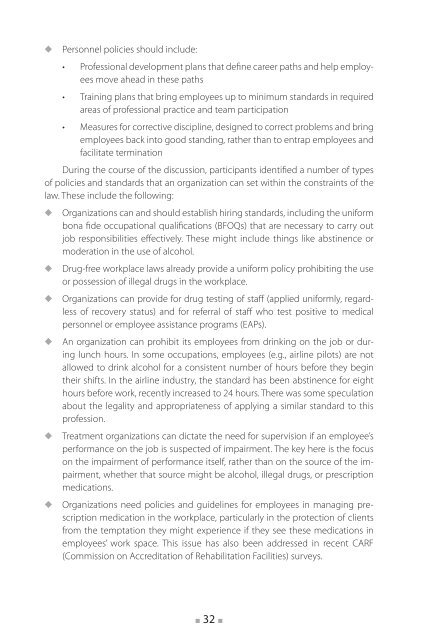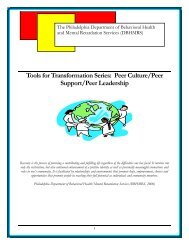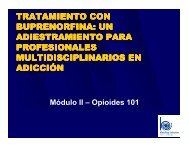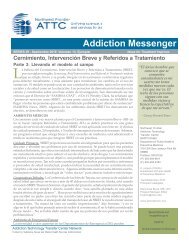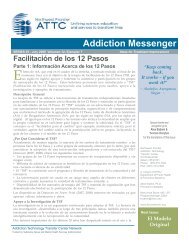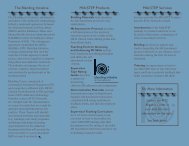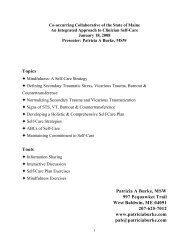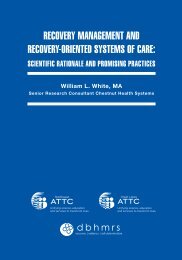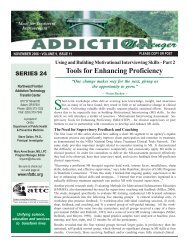alcohol and other drug problems among addiction professionals
alcohol and other drug problems among addiction professionals
alcohol and other drug problems among addiction professionals
You also want an ePaper? Increase the reach of your titles
YUMPU automatically turns print PDFs into web optimized ePapers that Google loves.
◆ Personnel policies should include:• Professional development plans that define career paths <strong>and</strong> help employeesmove ahead in these paths• Training plans that bring employees up to minimum st<strong>and</strong>ards in requiredareas of professional practice <strong>and</strong> team participation• Measures for corrective discipline, designed to correct <strong>problems</strong> <strong>and</strong> bringemployees back into good st<strong>and</strong>ing, rather than to entrap employees <strong>and</strong>facilitate terminationDuring the course of the discussion, participants identified a number of typesof policies <strong>and</strong> st<strong>and</strong>ards that an organization can set within the constraints of thelaw. These include the following:◆ Organizations can <strong>and</strong> should establish hiring st<strong>and</strong>ards, including the uniformbona fide occupational qualifications (BFOQs) that are necessary to carry outjob responsibilities effectively. These might include things like abstinence ormoderation in the use of <strong>alcohol</strong>.◆◆◆◆◆Drug-free workplace laws already provide a uniform policy prohibiting the useor possession of illegal <strong>drug</strong>s in the workplace.Organizations can provide for <strong>drug</strong> testing of staff (applied uniformly, regardlessof recovery status) <strong>and</strong> for referral of staff who test positive to medicalpersonnel or employee assistance programs (EAPs).An organization can prohibit its employees from drinking on the job or duringlunch hours. In some occupations, employees (e.g., airline pilots) are notallowed to drink <strong>alcohol</strong> for a consistent number of hours before they begintheir shifts. In the airline industry, the st<strong>and</strong>ard has been abstinence for eighthours before work, recently increased to 24 hours. There was some speculationabout the legality <strong>and</strong> appropriateness of applying a similar st<strong>and</strong>ard to thisprofession.Treatment organizations can dictate the need for supervision if an employee’sperformance on the job is suspected of impairment. The key here is the focuson the impairment of performance itself, rather than on the source of the impairment,whether that source might be <strong>alcohol</strong>, illegal <strong>drug</strong>s, or prescriptionmedications.Organizations need policies <strong>and</strong> guidelines for employees in managing prescriptionmedication in the workplace, particularly in the protection of clientsfrom the temptation they might experience if they see these medications inemployees’ work space. This issue has also been addressed in recent CARF(Commission on Accreditation of Rehabilitation Facilities) surveys.n 32 n


